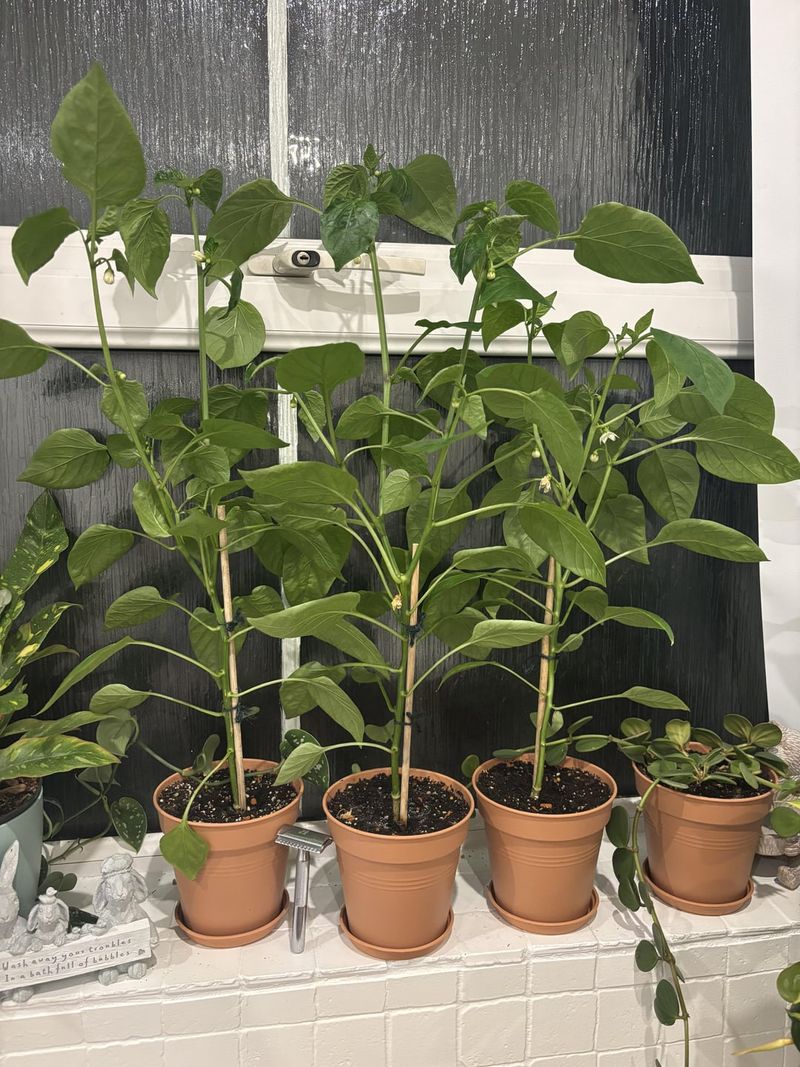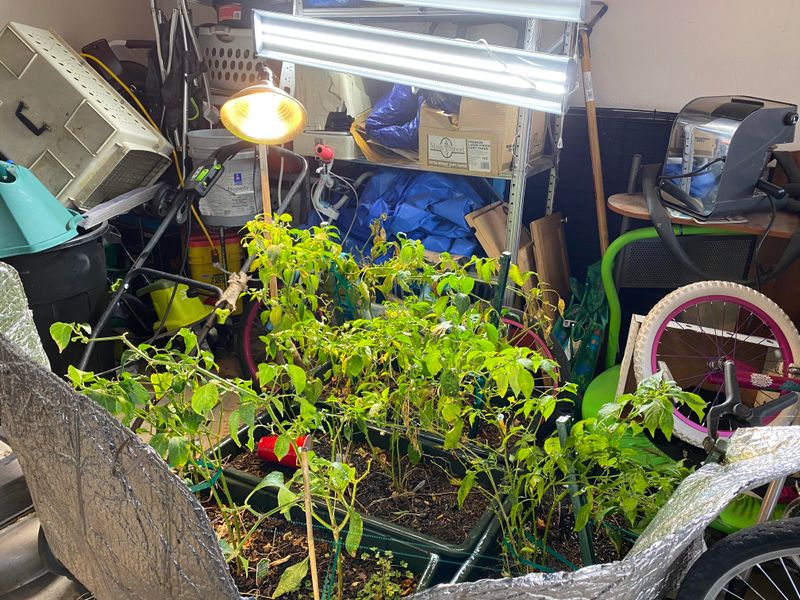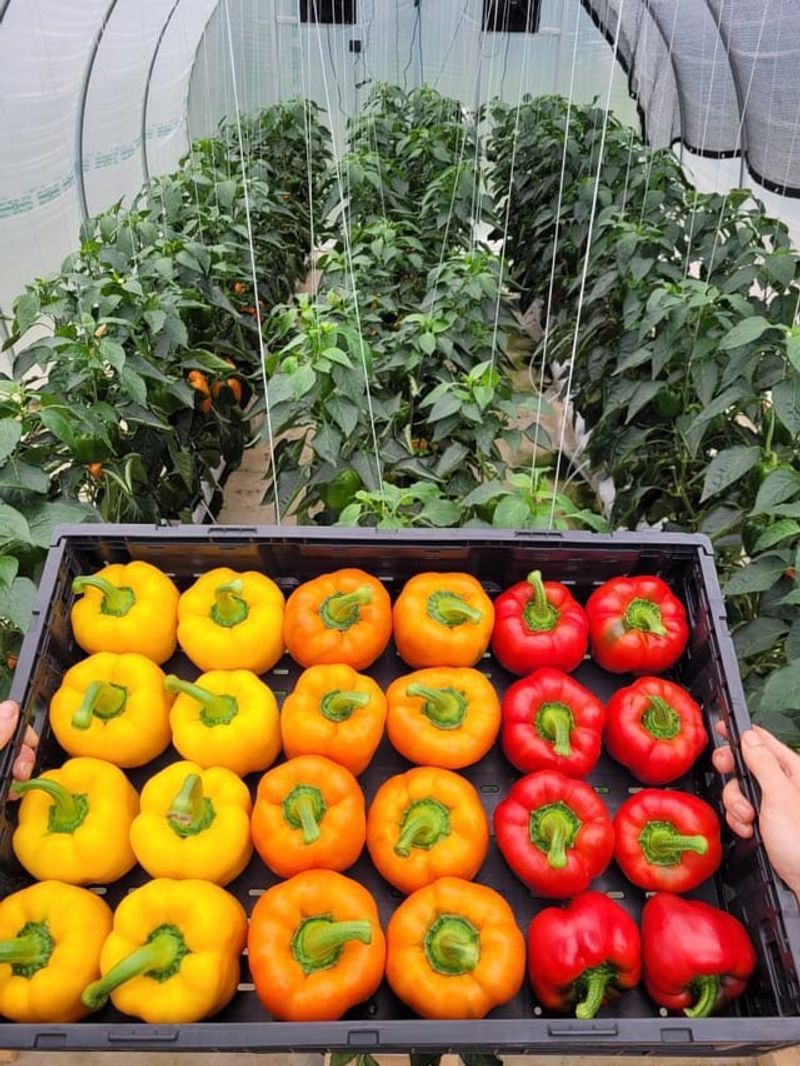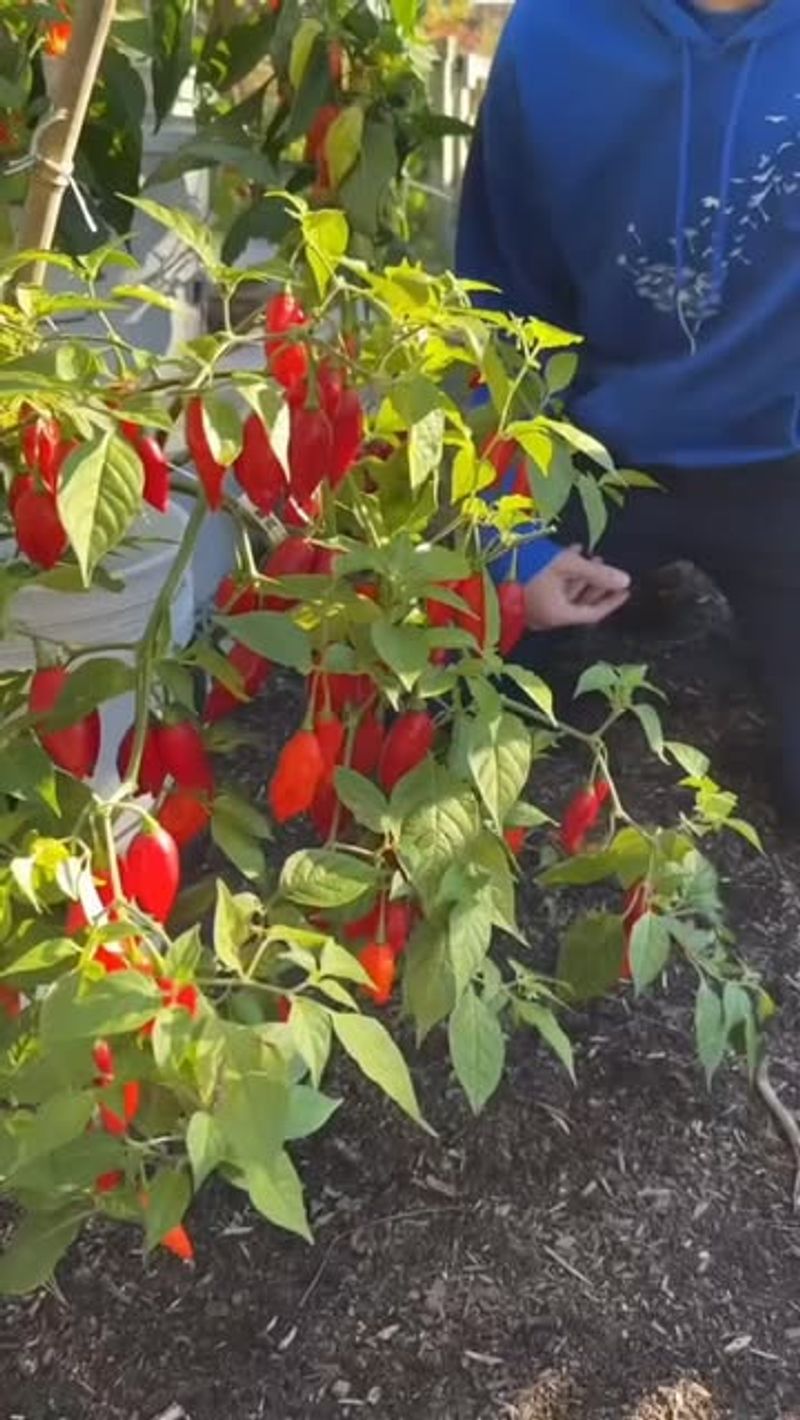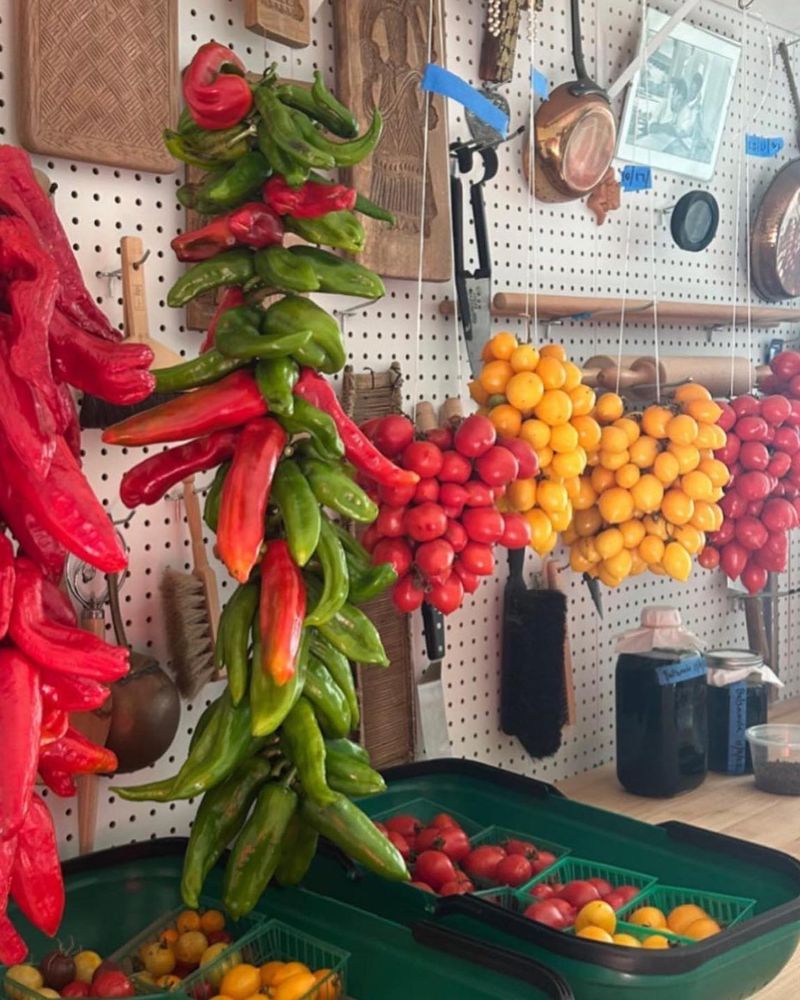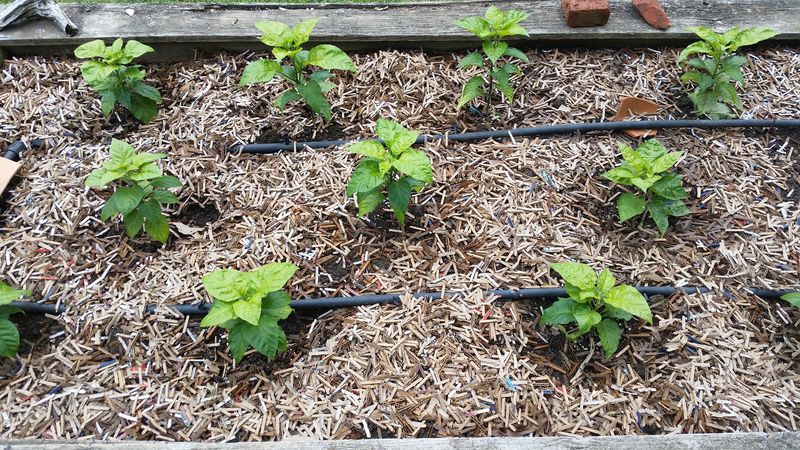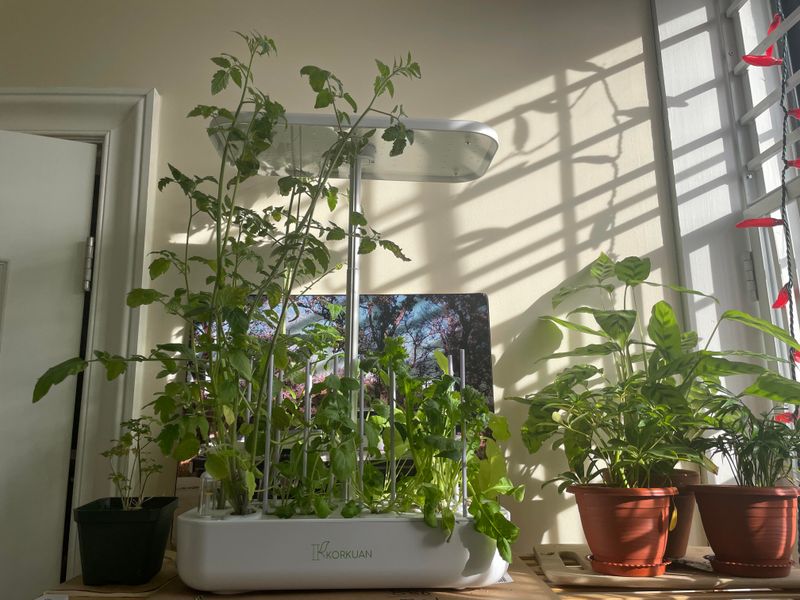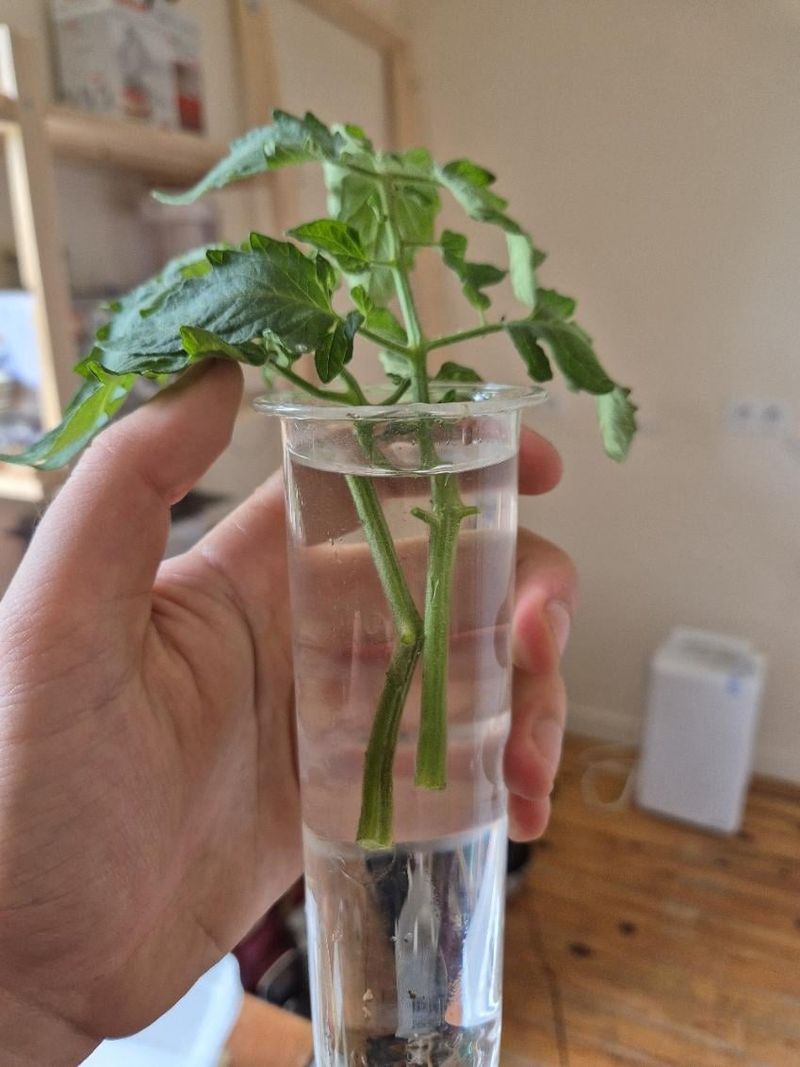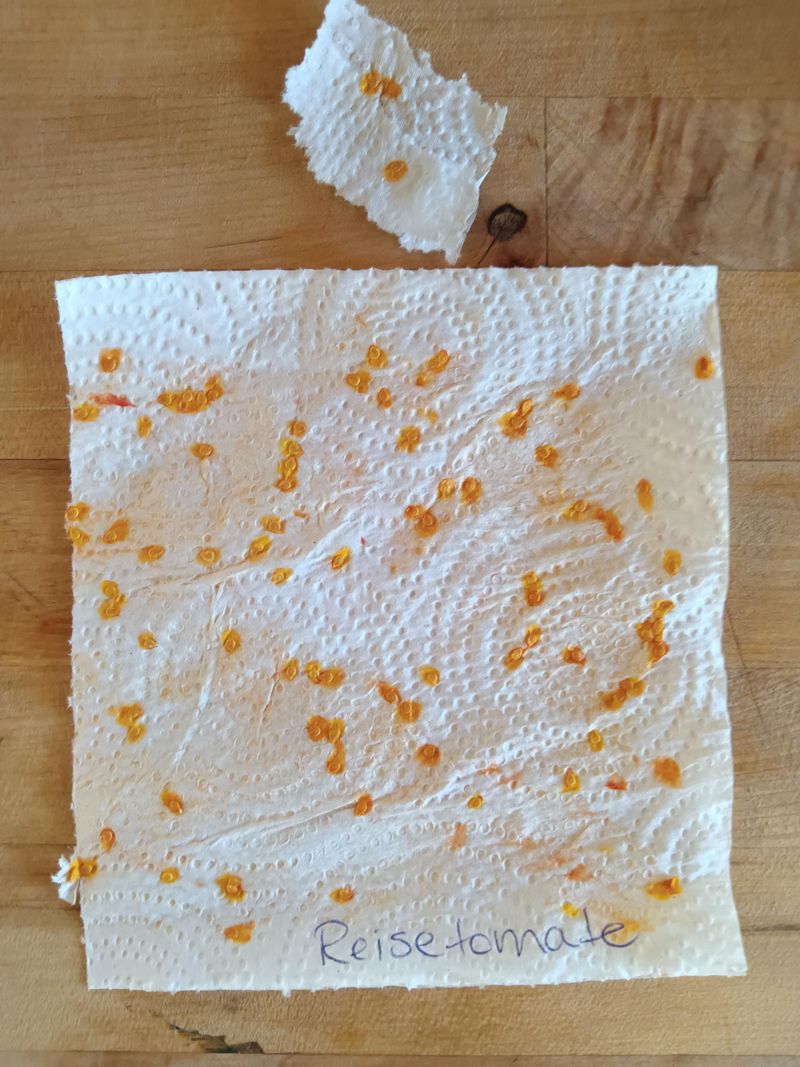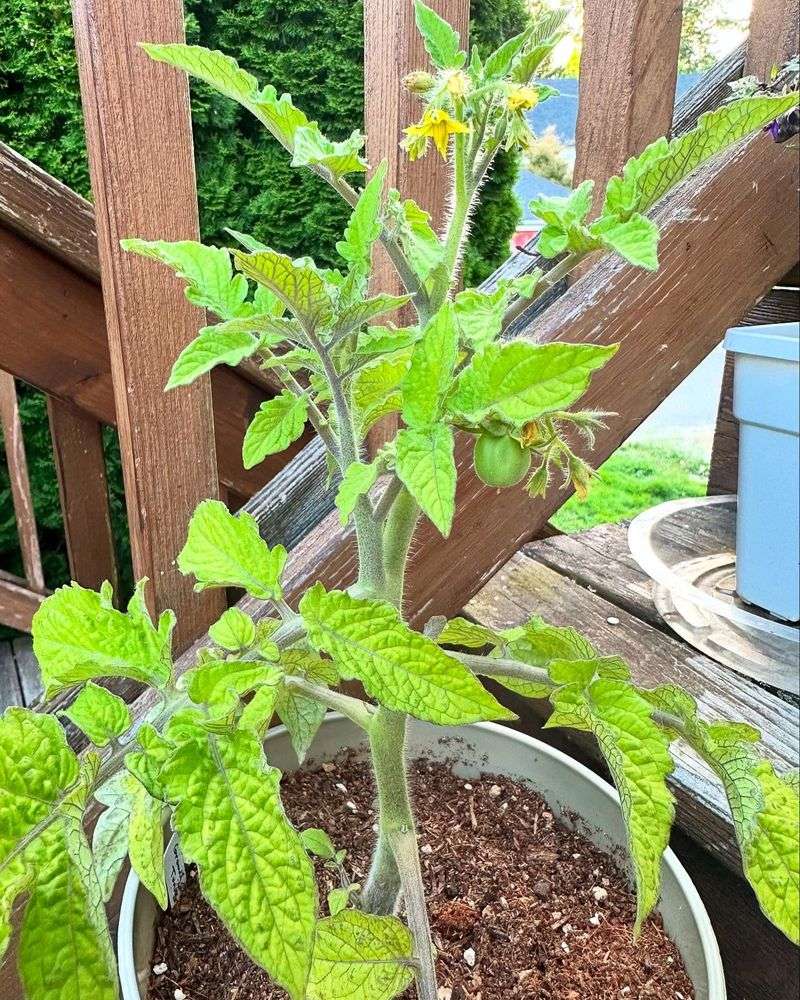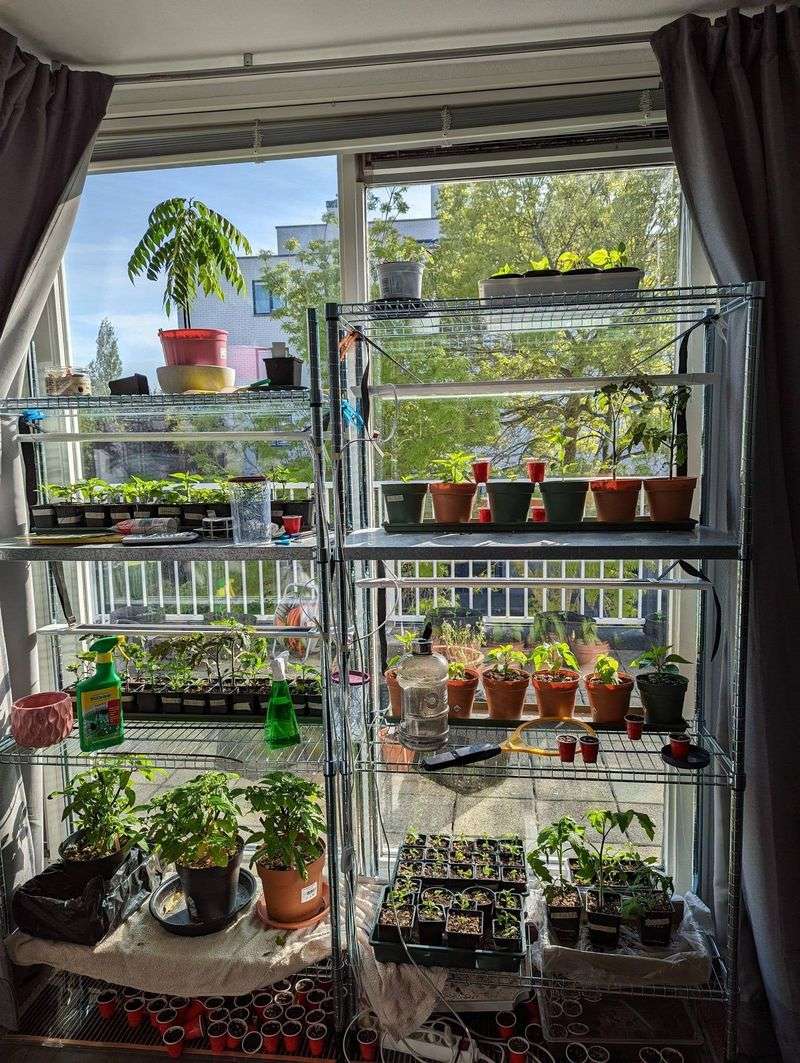New Mexico’s winters can be tricky, but with the right care, your peppers and tomatoes can survive and even thrive until spring. I’ve learned some simple tricks to protect these heat-loving plants from chilly nights and dry air without losing all that summer’s hard work.
From cozy spots to smart watering, these tips keep your plants healthy through the cold months. Overwintering means less replanting and an earlier harvest next year.
Let’s keep those peppers and tomatoes going strong well past the first frost!
1. Potted Plant Migration
Moving potted peppers indoors before the first frost hits is remarkably effective in New Mexico’s climate. Find a sunny window where temperatures stay above 55°F, and reduce watering to once every 1-2 weeks.
Many New Mexico gardeners successfully keep their favorite varieties alive this way, sometimes for years! Just remember to check occasionally for pests that might have hitched a ride inside.
2. Garage Storage System
Your attached garage can serve as the perfect winter home for dormant plants. Temperatures in New Mexico garages typically hover around 40-50°F—ideal for plant hibernation. Trim plants back by half their size first.
Water sparingly every 3-4 weeks, just enough to prevent complete drying. Many New Mexican gardeners successfully store multiple plants this way, stacking them efficiently on shelving units.
3. Greenhouse Protection
Small greenhouse structures work wonders in New Mexico’s sunny winter days. Even when outside temperatures drop below freezing at night, these structures capture daytime heat and protect your plants.
The desert climate of New Mexico actually makes this method particularly effective compared to cloudier states. Add water barrels inside to absorb heat during the day and release it slowly overnight.
4. Cold Frame Construction
Build simple cold frames using old windows and lumber to create mini-greenhouses. The angled glass or plastic tops allow New Mexico’s abundant winter sunshine to warm the soil while blocking chilly winds.
Many gardeners across New Mexico’s varying elevations use this technique with great success. Remember to prop open the tops on unusually warm days to prevent overheating your precious plants.
5. Root Cellar Storage
Traditional root cellars or cool basements provide excellent conditions for overwintering pepper plants as dormant roots. Carefully dig up your plants, shake off excess soil, and hang them upside down in New Mexico’s typically dry conditions.
The state’s low humidity actually helps prevent mold during storage. Come spring, replant these seemingly dead sticks and watch them burst back to life with vigor that will amaze your neighbors.
6. Mulch Mounding
In New Mexico’s milder southern regions, heavy mulching sometimes allows plants to survive winter right in the garden. Create 8-12 inch mounds of straw, leaves, or wood chips around the base after trimming plants back severely.
Many gardeners in Las Cruces and other southern New Mexico areas have success with this method. The key is waiting until after the first light frost before applying your protective mulch layer.
7. Container Conversion
Transform garden-grown plants into container specimens before frost arrives. Carefully dig around the root ball, preserving as many roots as possible, then transplant into appropriately sized pots with fresh soil.
The dry climate of New Mexico means you’ll need to monitor moisture levels carefully during this transition. Many Albuquerque gardeners keep their favorite heirloom varieties alive for years using this method.
8. Grow Light Systems
Set up grow lights in a spare room or basement to keep plants actively growing all winter. New Mexico’s dry winter air requires occasional misting to maintain humidity around your indoor pepper jungle.
Many Santa Fe gardeners have transformed closets into productive growing spaces this way. Full-spectrum LED lights have become affordable and use surprisingly little electricity while keeping your plants thriving until spring returns.
9. Cloning Through Cuttings
Take 6-inch cuttings from healthy plants before frost arrives. Remove lower leaves, dip in rooting hormone, and place in small pots of moist soil under clear plastic domes to create mini-greenhouses.
The consistent indoor temperatures of New Mexico homes provide ideal conditions for successful rooting. Many gardeners across the state maintain their favorite pepper varieties for decades through this simple propagation method.
10. Heated Soil Cables
Install soil heating cables in raised beds or large containers to keep root zones warm during New Mexico’s cold nights. Cover plants with frost cloth or plastic for additional protection when temperatures dip below freezing.
The sunny days common throughout New Mexico winters make this approach particularly effective. Many gardeners in the higher elevations around Taos use this method to extend their growing season significantly.
11. Seed Saving Strategy
Harvest seeds from your best producers before frost arrives. Properly dried and stored seeds will remain viable for years in New Mexico’s naturally low humidity environment.
Many traditional New Mexican gardeners have maintained family heirloom varieties this way for generations. Label carefully and store in paper envelopes inside airtight containers in a cool, dark location until spring planting time.
12. Sunroom Sanctuary
Transform a sunroom or enclosed porch into a winter garden haven. New Mexico’s abundant sunshine makes sunrooms particularly effective for overwintering heat-loving plants like peppers and tomatoes.
Many homes throughout New Mexico feature these sun-catching spaces. Supplement with grow lights on particularly cloudy days, and group plants together to create a microclimate that helps maintain humidity in the dry winter air.
13. Basement Dormancy
Induce plant dormancy by gradually reducing light and water, then store in a cool basement. Temperatures between 35-45°F are ideal for this hibernation-like state that many New Mexico homes can provide.
Throughout central New Mexico, gardeners use this method successfully. Check plants monthly for signs of desiccation, providing just enough water to keep roots barely alive until spring returns.
14. Windowsill Mini-Gardens
Create compact windowsill gardens from your favorite varieties. Severely prune larger plants and repot in smaller containers that fit perfectly on south-facing New Mexico windowsills.
The state’s famous clear winter skies provide excellent growing light. Many Roswell residents maintain productive mini pepper plants this way, harvesting fresh peppers occasionally even during the coldest months of the year.


